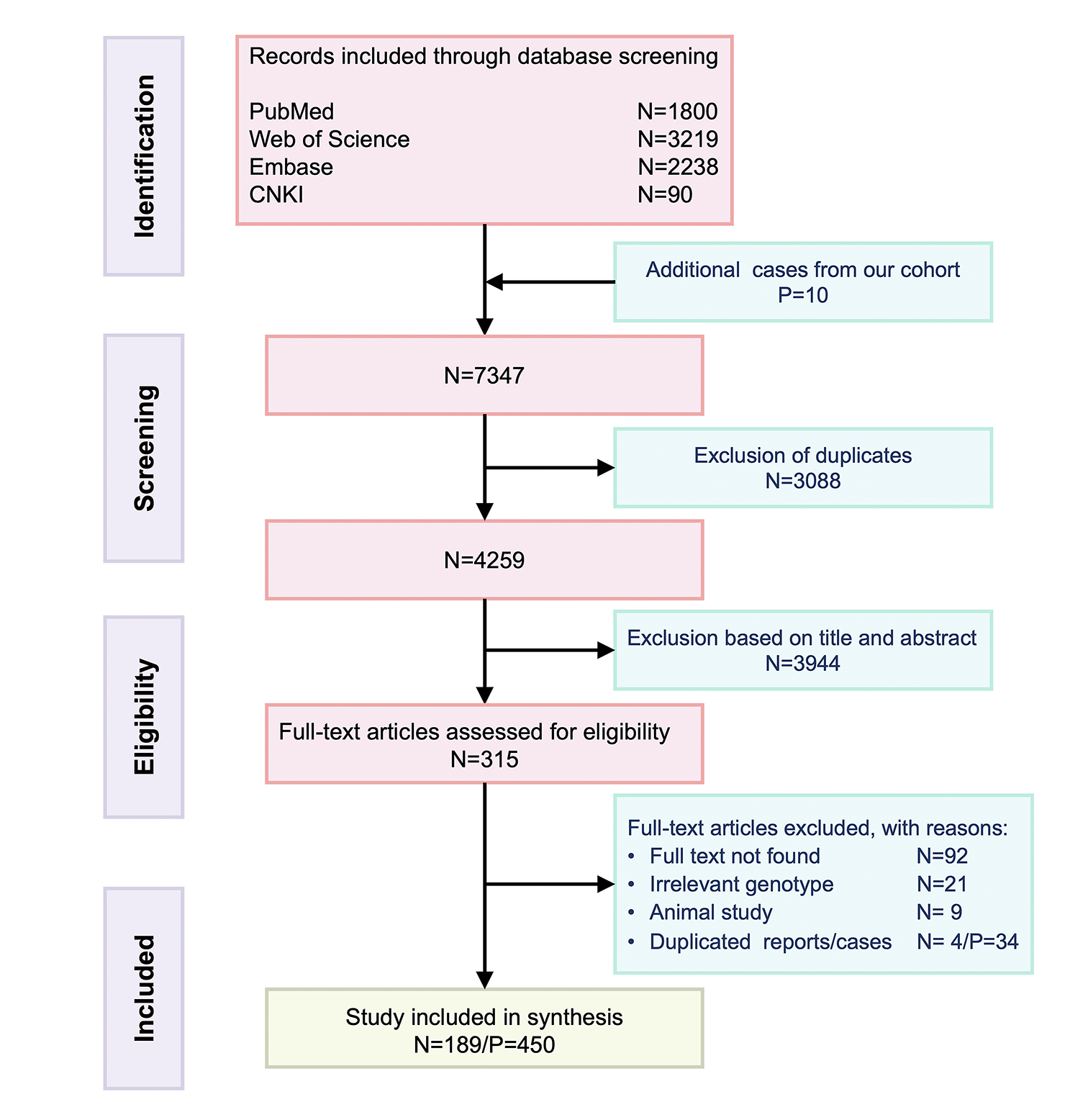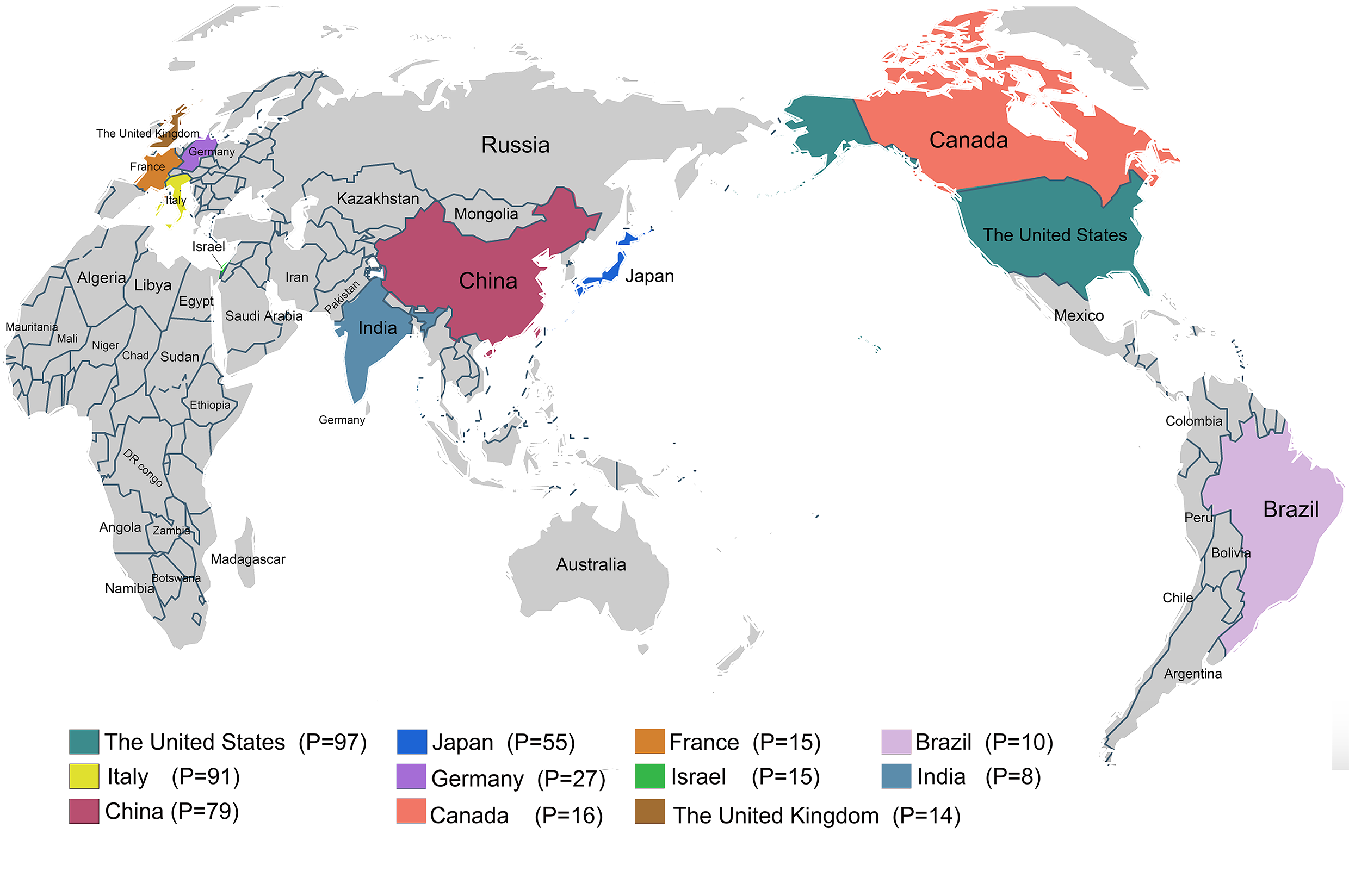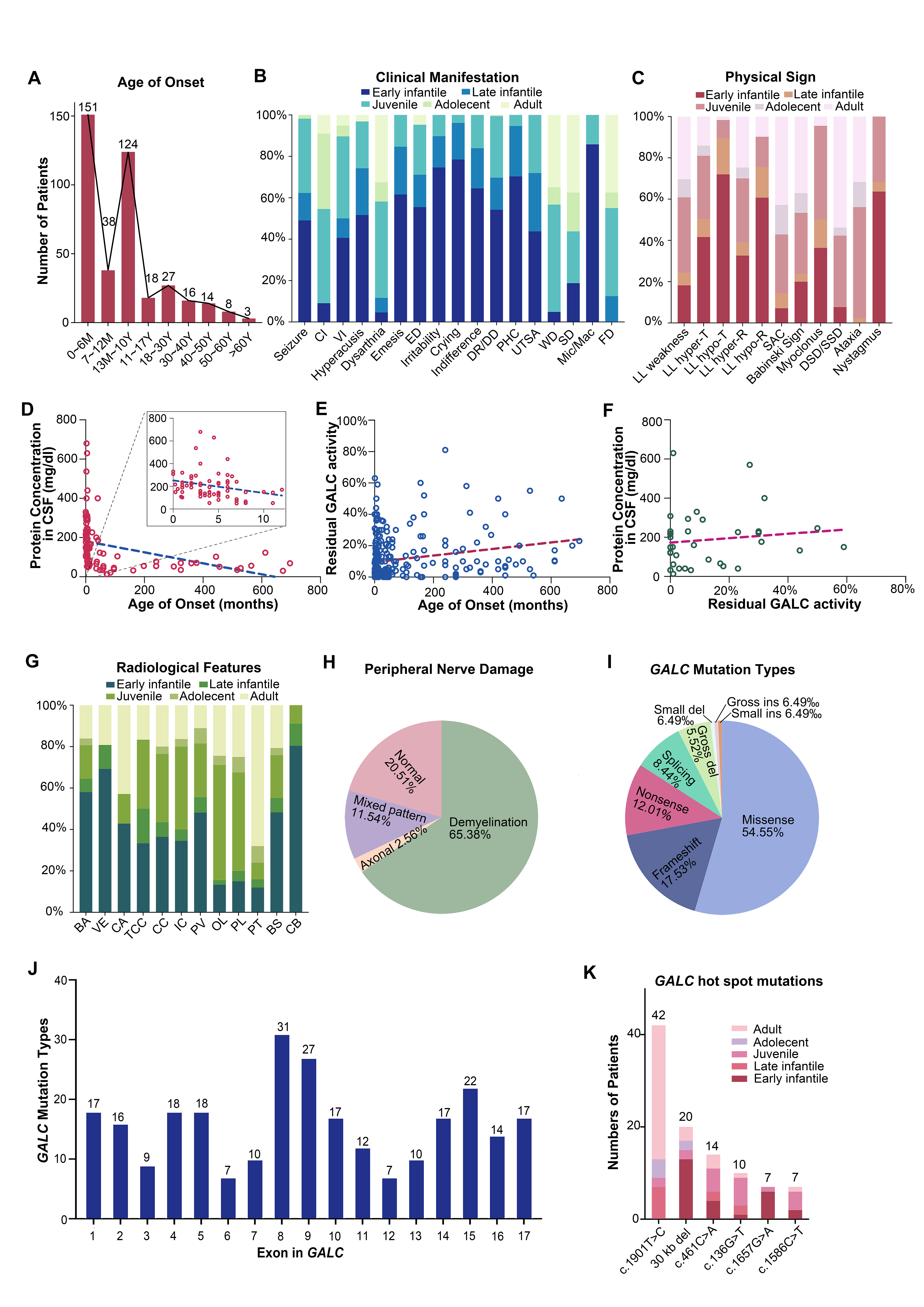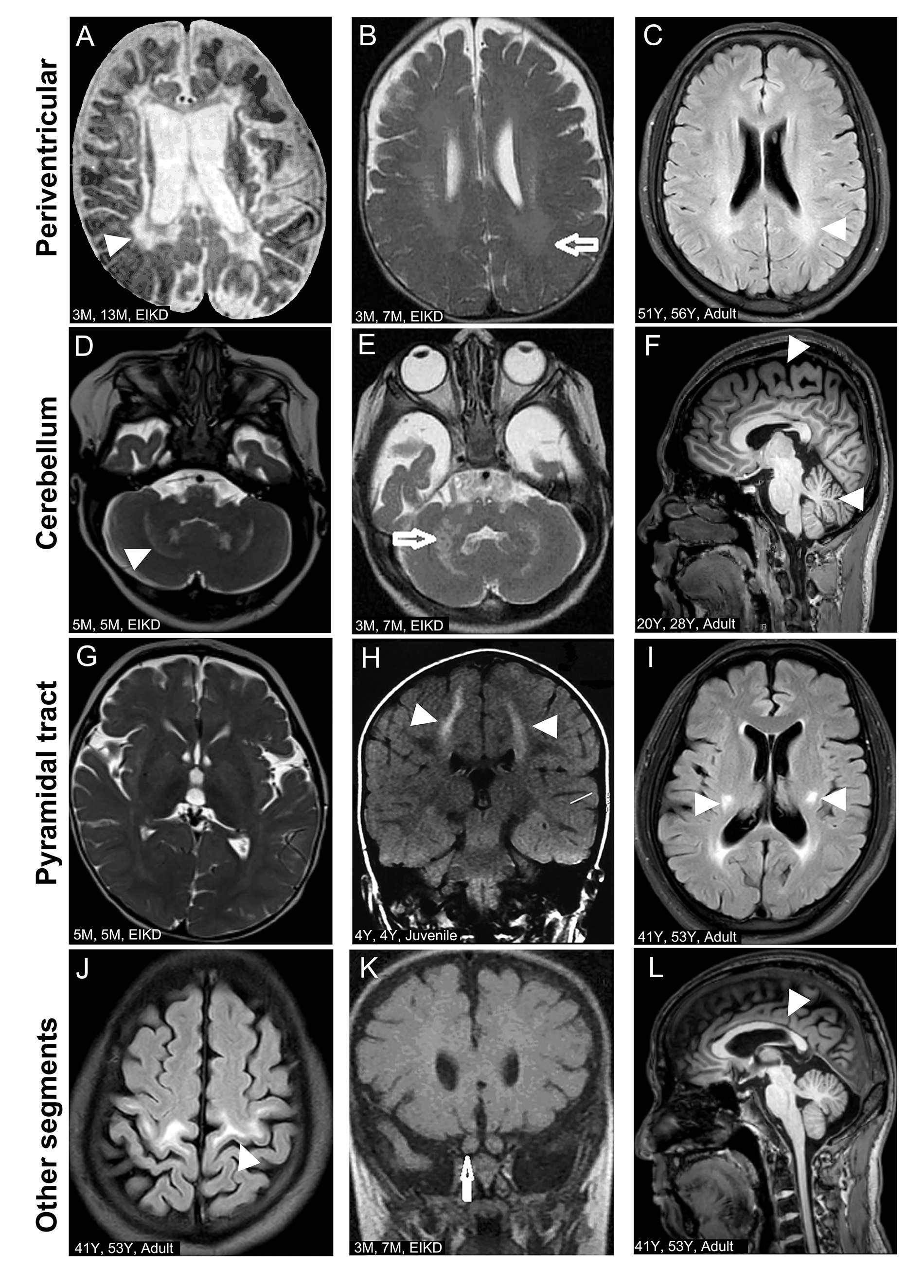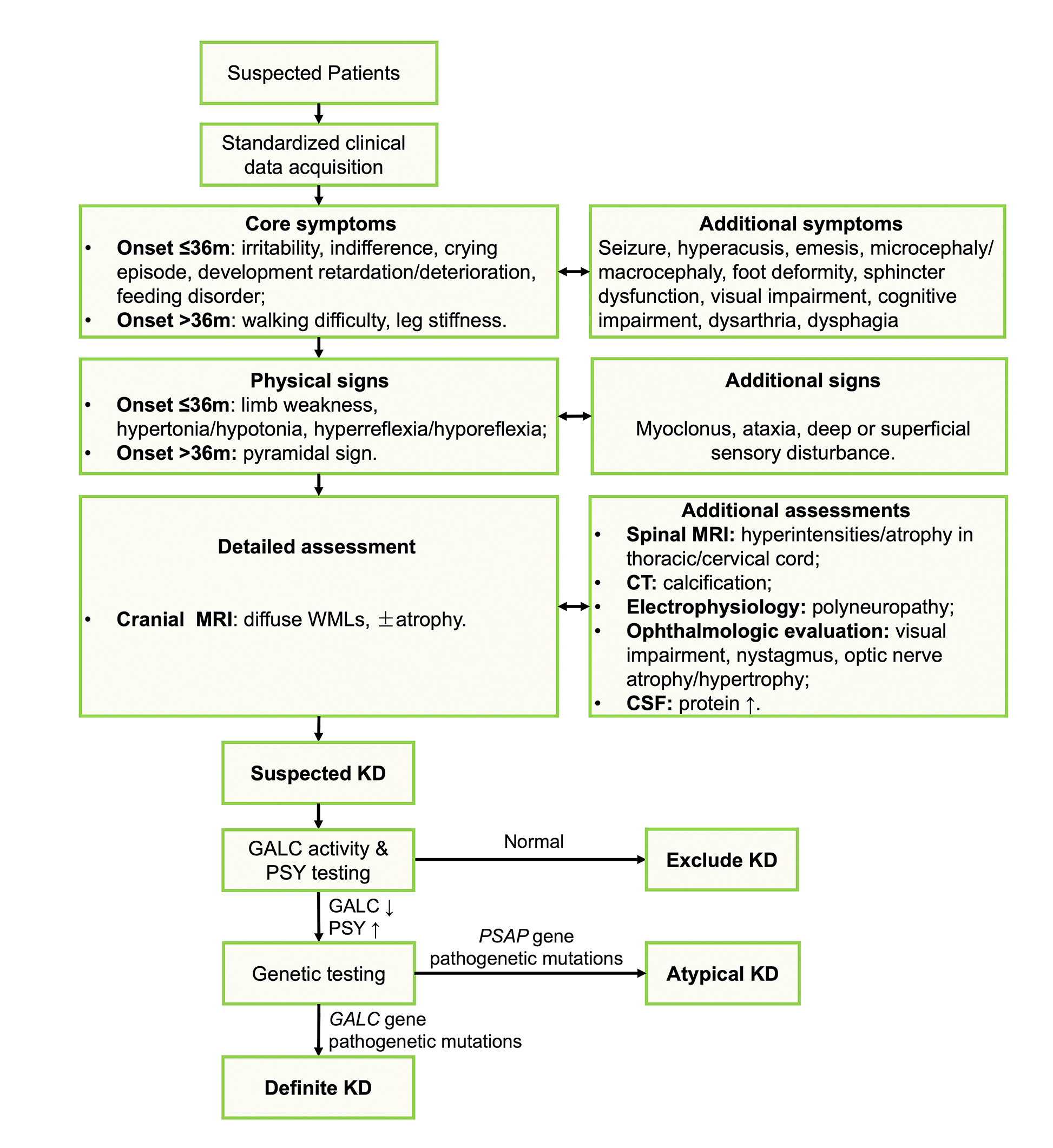Category: Spasticity
Objective: To summarize and analyze the clinical and genetic profile of patients with Krabbe disease worldwide, and further explore the genotype-phenotype relationships.
Background: Krabbe disease (or globoid cell leukodystrophy, GLD) is a representative form of hereditary leukoencephalopathy due to galactocerebrosidase (GALC) gene mutations. The clinical manifestation is highly heterogeneous, making the diagnosis and timely treatment challenging.
Method: A systematic search and quantitative analysis of cases with Krabbe disease is conducted through PubMed, Web of Science, Embase, and CNKI databases.
Results: A total of 450 published cases are analyzed (male: female = 201: 230) from 23 countries including the United States (21.56%), Italy (20.22%), China (17.56%), Japan (12.22%), etc. The distribution pattern of age at onset evolves with early infantile (37.84%) > juvenile (31.08%) > adult (17.04%) > late infantile (9.52%) > adolescent-onset (4.51%) groups. The residual GALC activity and CSF protein concentrations are positively and negatively correlated with the age at onset, respectively (p<0.0001, r=0.3037; p<0.0001, r=-0.6647). The hallmark of cranial MRI is the diffuse white matter lesions, with cerebellar, periventricular, and brain stem most involved in infantile-onset type, and pyramidal tract and parietal lobe most affected in adult-onset type. In electrophysiology, demyelination is the representative form of peripheral nerve damage. Currently, a total of 308 pathogenic mutations in GALC gene have been confirmed worldwide, among which c.1901T>C (21.54%), 30kb deletion (10.26%),c.461C>A (7.18%), c.136G>T (5.13%), c.1586C>T (3.59%) and c.1657G>A (3.59%) are the most frequent. c.1901T>C occupies the majority of adult-onset form (69.05%), while 30kb deletion (25.49%) and c.1657G>A (11.76%) prevail in early-infantile onset ones. Approximately 42.86% Chinese and 36.36% Japanese patients carry c.1901T>C, and 20% Chinese patients carry c.461C>A. In Italy, 30kb del (21.82%) and c.1657G>A (12.73%) run the most common types.
Conclusion: GALC activity and CSF protein concentration are important biomarkers for predicting the age of onset, which directly determines the prognosis and severity. Given the significant heterogeneity in phenotype and various treatment selection strategies among subtypes, we propose a standardized clinical evaluation and diagnostic flow and criteria for Krabbe disease.
Flowchart of the reference selection
Distribution of Krabbe disease worldwide
Clinicogenetic characteristics of Krabbe
Pictorial examples of brain MRI
Flowchart for Krabbe diagnosis
References: None.
To cite this abstract in AMA style:
WT. Tian, L. Yao, T. Xu, L. Cao. Krabbe disease: A systematic review and evidence-based guideline for diagnosis [abstract]. Mov Disord. 2024; 39 (suppl 1). https://www.mdsabstracts.org/abstract/krabbe-disease-a-systematic-review-and-evidence-based-guideline-for-diagnosis/. Accessed January 4, 2026.« Back to 2024 International Congress
MDS Abstracts - https://www.mdsabstracts.org/abstract/krabbe-disease-a-systematic-review-and-evidence-based-guideline-for-diagnosis/

